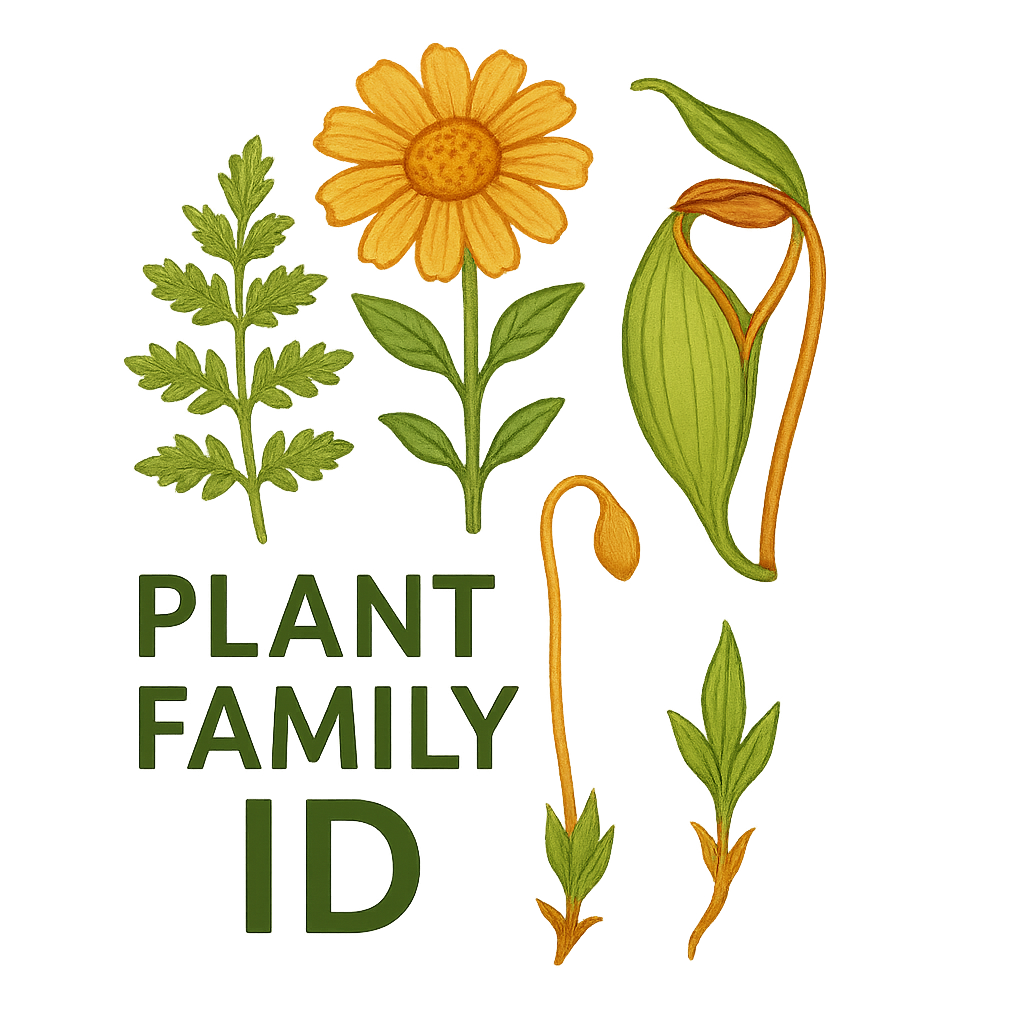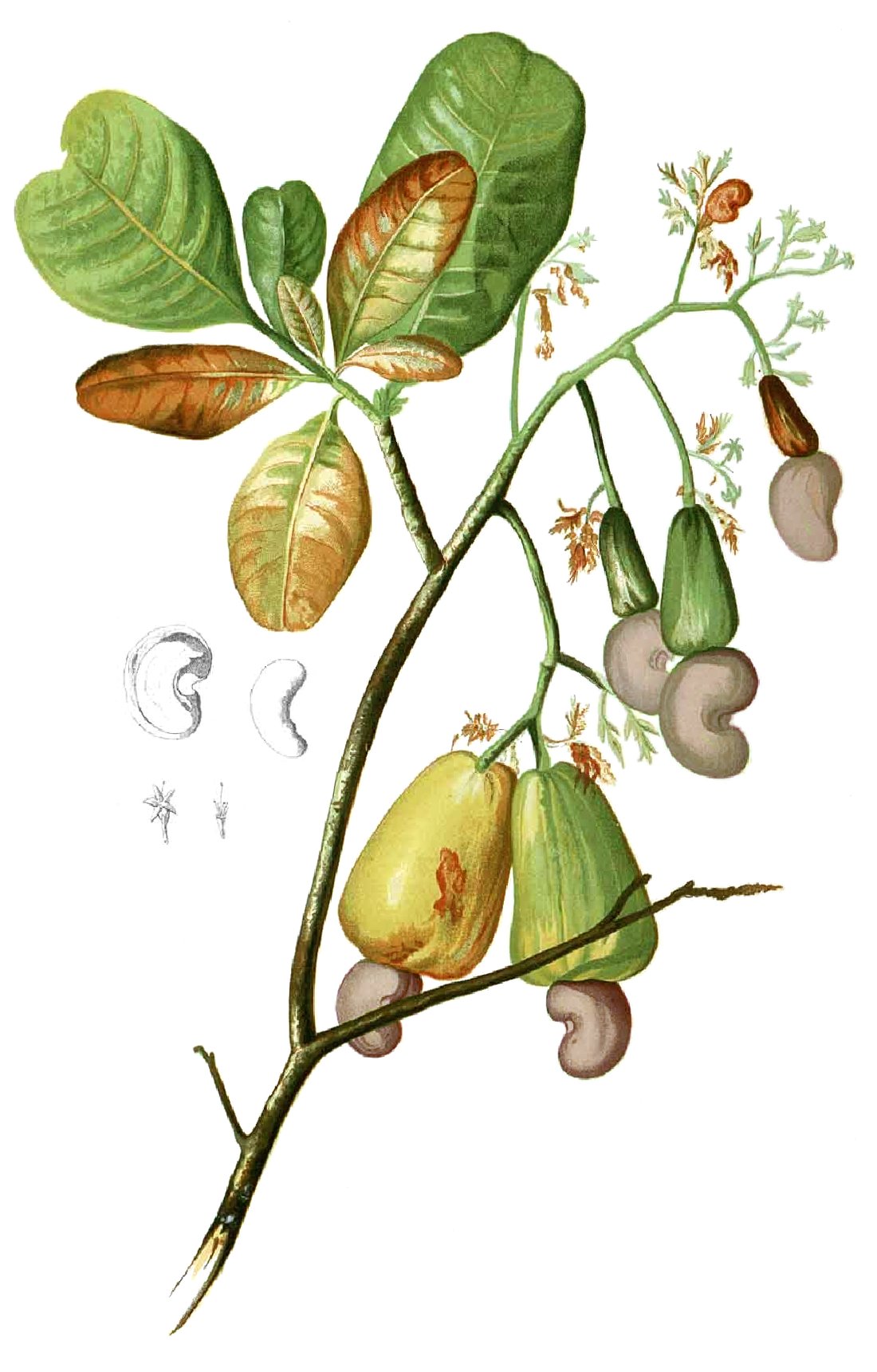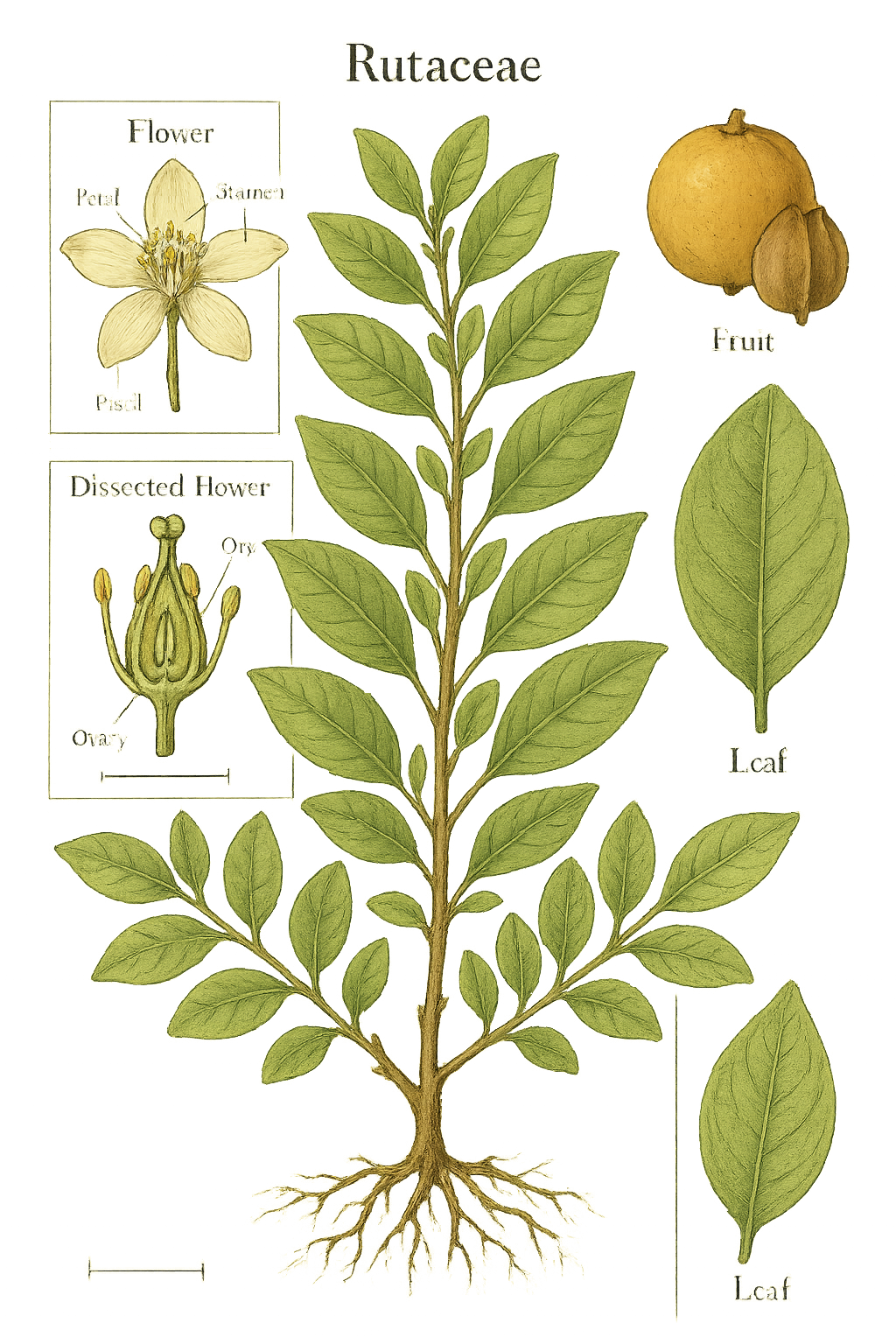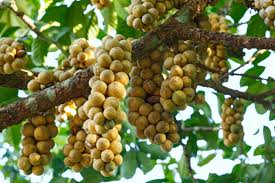Sapindaceae
Soapberry Family (incl. Maples & Horse Chestnuts)
Sapindaceae is a large, diverse, and cosmopolitan family of trees, shrubs, and lianas (woody vines). In its broad sense (APG IV), it includes the maples (formerly Aceraceae) and horse chestnuts (formerly Hippocastanaceae). Leaves are highly variable, usually alternate and pinnately or palmately compound (but opposite and palmately lobed/compound in maples/horse chestnuts), typically lacking stipules. Flowers are often small, unisexual, and zygomorphic, usually with 4-5 petals/sepals, a prominent nectar disc, and typically 8 stamens. Fruits are extremely diverse, including capsules, berries, drupes, nuts, and schizocarps with winged segments (samaras).
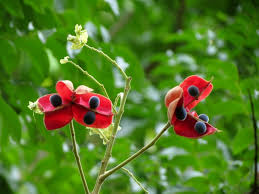
Overview
The Sapindaceae family, broadly defined, is a major component of woody vegetation worldwide, containing about 138 genera and nearly 1900 species. Its members occupy a vast range of habitats from tropical rainforests to temperate woodlands and arid regions. The inclusion of maples (Acer) and horse chestnuts/buckeyes (Aesculus) based on molecular phylogenetic data significantly expanded the family's morphological diversity, particularly regarding leaf arrangement (opposite vs. alternate) and fruit type (samaras/nuts vs. capsules/berries/drupes).
This family holds immense economic and ecological importance. Maples are valued for timber, syrup production (Acer saccharum), and as ornamental trees. Horse chestnuts are widely planted ornamentals. Tropical members provide important fruits like lychee (Litchi chinensis), rambutan (Nephelium lappaceum), longan (Dimocarpus longan), and guarana (Paullinia cupana). Soapberries (Sapindus spp.) contain saponins and have traditional uses as soap substitutes. Many species are important timber sources or possess medicinal properties.
Ecologically, members contribute significantly to forest canopies, provide food resources for wildlife, and participate in various pollination syndromes. The family belongs to the order Sapindales, which also includes citrus (Rutaceae), cashews/mangos (Anacardiaceae), and mahogany (Meliaceae).
Quick Facts
- Scientific Name: Sapindaceae
- Common Name: Soapberry Family (incl. Maples, Horse Chestnuts)
- Number of Genera: Approximately 138 (sensu lato)
- Number of Species: Approximately 1900 (sensu lato)
- Distribution: Cosmopolitan, especially diverse in tropics/subtropics.
- Evolutionary Group: Eudicots - Sapindales
- Habit: Trees, shrubs, lianas.
Key Characteristics
Growth Form and Habit
Trees, shrubs, or lianas (woody vines).
Leaves
Leaves are highly variable. Typically arranged alternately and are pinnately or palmately compound, sometimes simple or unifoliolate. However, in the former Aceraceae (Acer, Dipteronia) and Hippocastanaceae (Aesculus, Billia), leaves are characteristically opposite and palmately lobed (Acer) or palmately compound (Aesculus). Leaves usually lack stipules (exstipulate), though small stipules are present in a few genera (e.g., Cardiospermum).
Stems
Stems are woody.
Roots
Normal woody plant root system.
Sexuality and Inflorescence
Inflorescences are typically terminal or axillary panicles or thyrses (branched clusters), sometimes racemes or cymes. Flowers are usually unisexual, with plants being monoecious, dioecious, or polygamous (having both unisexual and bisexual flowers on the same plant). Some species have bisexual flowers.
Flowers
Flowers are generally small and often functionally unisexual, even if appearing structurally bisexual. They are frequently zygomorphic (bilaterally symmetrical) but can be actinomorphic (radially symmetrical). Flowers are typically 4- or 5-merous.
- Calyx: Consists of 4 or 5 sepals, which are usually free or fused only at the base.
- Corolla: Consists of 4 or 5 petals, free, often clawed at the base, and frequently bearing basal appendages or scales on the inner surface near the base. Petals are sometimes absent.
- Nectar Disc: A prominent nectar disc is usually present, typically located between the petals and stamens (extrastaminal) or within the stamens (intrastaminal).
- Androecium (Stamens): Usually consists of (4-)8(-10) stamens (often twice the number of sepals but with some reduction). Filaments are free, often hairy, and typically inserted inside or upon the nectar disc. Stamens are not opposite the petals (unlike Rhamnaceae).
- Ovary: Superior, composed of (2-)3(-8) fused carpels, forming a (2-)3(-8)-locular ovary. Placentation is usually axile, with 1 or 2 ovules per locule. Style is usually single, terminal or arising from between the ovary lobes, with a lobed or capitate stigma.
Fruits and Seeds
Fruit type is extremely variable across the family, providing key identification features for different subgroups:
- Capsule: Dry fruit splitting open (e.g., Koelreuteria, Aesculus - though seed is nut-like).
- Berry: Fleshy fruit with multiple seeds (e.g., Sapindus).
- Drupe: Fleshy fruit with one or more stones (e.g., Litchi, Nephelium).
- Schizocarp: Fruit splitting into segments, often winged samaras (Acer, Dipteronia).
- Nut: Hard-shelled, single-seeded fruit (Aesculus seed within the capsule).
Seeds often possess an aril (fleshy appendage) or sarcotesta (fleshy seed coat). The embryo is typically curved, and endosperm is usually absent.
Chemical Characteristics
Plants often contain saponins (especially in fruits of Sapindus), cyclopropane amino acids, tannins, and sometimes cyanogenic glycosides or ethereal oils.
Field Identification
Identifying Sapindaceae requires considering its broad diversity, including the distinct features of maples and horse chestnuts:
Primary Identification Features
- Habit: Tree, shrub, or liana.
- Leaves: Usually alternate and compound (pinnate/palmate), typically exstipulate. Exceptions: Acer (opposite, palmately lobed), Aesculus (opposite, palmately compound).
- Flowers: Small, often unisexual and zygomorphic, 4/5-merous, usually with 8 stamens and a prominent nectar disc.
- Fruit: Extremely variable - check for capsules, berries, drupes, nuts, or characteristic winged samaras (Acer).
Secondary Identification Features
- Petals: Often have basal scales or appendages.
- Stamens: Filaments often hairy.
- Seeds: Often possess an aril or fleshy seed coat.
- Chemistry: Presence of saponins (e.g., foaming bark/fruit).
Seasonal Identification Tips
- Year-round Features: Habit, leaf arrangement (alternate/opposite), leaf type (compound/simple/lobed), and lack of stipules are key vegetative clues. Bark patterns can be useful for trees.
- Flowering Season: Varies greatly. Examine flower structure (symmetry, stamen number, disc).
- Fruiting Season: Fruit type is highly diagnostic and often persists, especially the distinctive samaras of maples or capsules of horse chestnuts/golden rain trees.
Common Confusion Points
Given its diversity, Sapindaceae can be confused with several families:
- Anacardiaceae (Cashew family): Often alternate, compound leaves. Distinguished by the frequent presence of resin ducts (often causing dermatitis), typically 5 or 10 stamens, and a single-locular ovary (usually), often with an eccentric style. Fruit is usually a drupe. Same order (Sapindales).
- Fabaceae (Legume family): Often alternate, compound leaves, but usually possess stipules and characteristic legume fruit. Flower structure is very different (often papilionaceous or caesalpinioid, typically 10 stamens). Different order (Fabales).
- Juglandaceae (Walnut family): Alternate, pinnately compound leaves, but flowers are unisexual and borne in catkins (wind-pollinated), fruit is a large drupe or nut enclosed in a husk. Different order (Fagales).
- Simaroubaceae (Tree-of-Heaven family): Often alternate, pinnately compound leaves. Distinguished by flowers often having stamens equal in number to petals and alternating with them, often with basal scales on filaments, and fruit typically a cluster of samaras or drupes. Same order (Sapindales).
- Rutaceae (Citrus family): Often compound leaves (pinnate/trifoliate/unifoliolate) with pellucid dots (oil glands). Flowers usually actinomorphic with prominent disc, fruit often a hesperidium, capsule, or drupe. Same order (Sapindales).
Checking leaf arrangement/compounding (remembering maple/horse chestnut exceptions), stipule presence (usually absent), flower symmetry/stamen number/disc, and especially the diverse fruit types helps distinguish Sapindaceae.
Field Guide Quick Reference
Look For:
- Tree/shrub/liana
- Leaves usually alternate & compound (pinnate/palmate)
- Except: Acer (opp, palmately lobed), Aesculus (opp, palmately compound)
- Usually exstipulate
- Flowers small, often unisexual & zygomorphic
- Usually 8 stamens
- Prominent nectar disc
- Fruit highly variable: capsule, berry, drupe, samara, nut
Key Variations:
- Leaf type & arrangement
- Flower symmetry (zygomorphic vs actinomorphic)
- Fruit type (diagnostic for subgroups)
- Presence of saponins
Notable Examples
Sapindaceae includes many economically and horticulturally important plants:

Acer saccharum
Sugar Maple
A large deciduous tree native to eastern North America, famous as the primary source of maple syrup and for its brilliant autumn foliage. Characterized by opposite, palmately lobed leaves and winged schizocarp fruits (samaras).

Aesculus hippocastanum
Horse Chestnut
A large deciduous tree native to the Balkans but widely planted as an ornamental in temperate regions. Known for its opposite, palmately compound leaves, showy panicles of white flowers with pink/yellow spots, and large, spiny capsules containing glossy brown nut-like seeds (conkers).

Litchi chinensis
Lychee
A tropical evergreen tree native to southern China, cultivated for its edible fruit. Leaves are alternate and pinnately compound. The fruit is a drupe with rough reddish skin, translucent white flesh (aril), and a single seed.
Phylogeny and Classification
Sapindaceae is the namesake family of the eudicot order Sapindales. This order belongs to the rosid clade (specifically malvids) and includes other economically important families like Anacardiaceae (cashew, mango, poison ivy), Rutaceae (citrus), Meliaceae (mahogany), and Burseraceae (frankincense, myrrh).
The modern circumscription of Sapindaceae is broader than traditional classifications, now including the genera formerly placed in Aceraceae (maples) and Hippocastanaceae (horse chestnuts). This unification is strongly supported by molecular phylogenetic data, which showed these groups nested within the traditional Sapindaceae lineage, making the older, narrower definition paraphyletic. The combined family exhibits greater morphological diversity but represents a well-supported monophyletic group.
Position in Plant Phylogeny
- Kingdom: Plantae
- Clade: Angiosperms (Flowering plants)
- Clade: Eudicots
- Clade: Rosids
- Order: Sapindales
- Family: Sapindaceae (sensu lato, including Aceraceae, Hippocastanaceae)
Evolutionary Significance
Sapindaceae is a highly significant family for several reasons:
- Major Diversification: Represents a large and successful radiation of woody plants across diverse global habitats.
- Economic Importance: Contains numerous species vital for timber, fruits, ornament, maple syrup, and traditional uses.
- Phylogenetic Revisions: The inclusion of maples and horse chestnuts exemplifies how molecular data reshapes understanding of family boundaries based on evolutionary history.
- Floral and Fruit Diversity: Exhibits an exceptionally wide range of fruit types and considerable variation in floral symmetry and structure within a single family, offering models for studying reproductive evolution.
- Chemical Diversity: Production of saponins and other compounds has ecological implications (defense) and economic uses.
